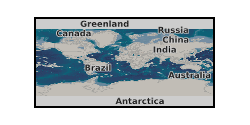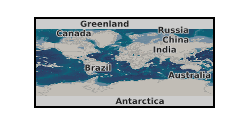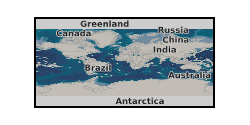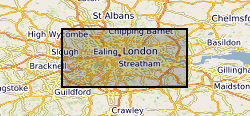Selenium
Type of resources
Available actions
Topics
Keywords
Contact for the resource
Provided by
Years
Formats
Representation types
Update frequencies
Scale
-

Inductively Coupled Plasma Mass Spectrometry data, part of a suite of 51 elements using aqua regia ICP-MS techniques at ALS Minerals (Ireland).
-

Pyrite samples from selected sedimentary organic-rich formations or associated igneous and metamorphic rocks were analysed by conventional S isotopic analysis. Pyrites were measured in order to provide insights into their origin. Light and variable S isotope compositions in pyrite have been used to infer the influence of sulphate-reducing bacteria (and subsequent Se precipitation by sulphate-reducing microbes), whereas heavier S isotope compositions indicate a non-biological origin (i.e. physical and chemical diagenesis).
-

Whole rock and sediment geochemical data covering a range of elements, where values are given in ppm (parts per million) or as a % (percentage). The data is ordered chronologically in an excel spreadsheet and each sample is given a ‘Sample ID’, ‘Lithology’, ‘Locality’, ‘Age’ and ‘Date analysed’, followed by whole rock and sediment values for the following elements; Ag, Al, As, Au, B, Ba, Be, Bi, Ca, Cd, Ce, Co, Cr, Cs, Cu, Fe, Ga, Ge, Hf, Hg, In, K, La, Li, Mg, Mn, Mo, Na, Nb, Ni, P, Pb, Pd, Pt, Rb, Re, S, Sb, Sc, Se, Sn, Sr, Ta, Te, Th, Ti, TI, U, V, W, Y, Zn, Zr. Cells which are highlighted orange signify that the value given was below the detection limit. The values in orange cells have been halved to maintain spreadsheet functionality (i.e. to remove ‘<’ symbols). Cells which have been highlighted blue signify that the value given was above the detection limit. ALS method:ME-MS41L (https://www.alsglobal.com/en/services-and-products/geochemistry/geochemistry-testing-and-analysis/whole-rock-analysis-and-lithogeochemistry) . The majority of the samples included in this data were collected in the UK, but, where appropriate, samples out with the UK were included. The majority of the data was collected from 2014 to 2019. Whole rock and sediment samples were analysed by solution ICP-MS. Samples of ~30 g were individually milled and homogenised, and 0.5 g were digested with aqua regia in a graphite heating block. The residue was diluted with deionised water (18 M¿ cm), mixed, and analysed using a Varian 725 instrument at ALS Minerals (Loughrea; method ID: ME-MS41L). This data was collected to better understand the low temperature cycling of Telurium (Te) and Sellenium (Se) in the geological environment. For example, a range of ochre samples were included in this database. Ochres are a modern precipitate commonly found in rivers and streams which flow through geographical areas with a history of mining resources which are rich in sulphides. Iron from the sulphides are leached out and deposited downstream, coating river and stream beds, giving a red, yellow or orange colouration. Ochres can be a sink for trace metals, so analysing the abundances of these can be informative from a resource perspective but also from an environmental hazard perspective. This would be useful for researchers who require reference data for whole rock and sediment data of a particular lithology or age. This data is was collected by, but not limited to the following individuals; John Parnell, Sam Spinks, Josef Armstrong, Liam A Bullock, Magali Perez, Xueying Wang & Connor Brolly.
-

The London Earth data are part of the Geochemical Baseline Survey of the Environment (G-BASE) dataset, a nation-wide project to determine the distribution of chemical elements in the surface environment. London Earth focuses on the soil of the capital city, the limits of the survey being defined by the Greater London Authority (GLA) administrative boundary. Chemical elements have been determined by X-ray fluorescence spectrometry (XRFS) at the laboratories of the British Geological Survey (BGS) in Keyworth, Nottingham. These results are presented as a Microsoft Excel file.
 NERC Data Catalogue Service
NERC Data Catalogue Service